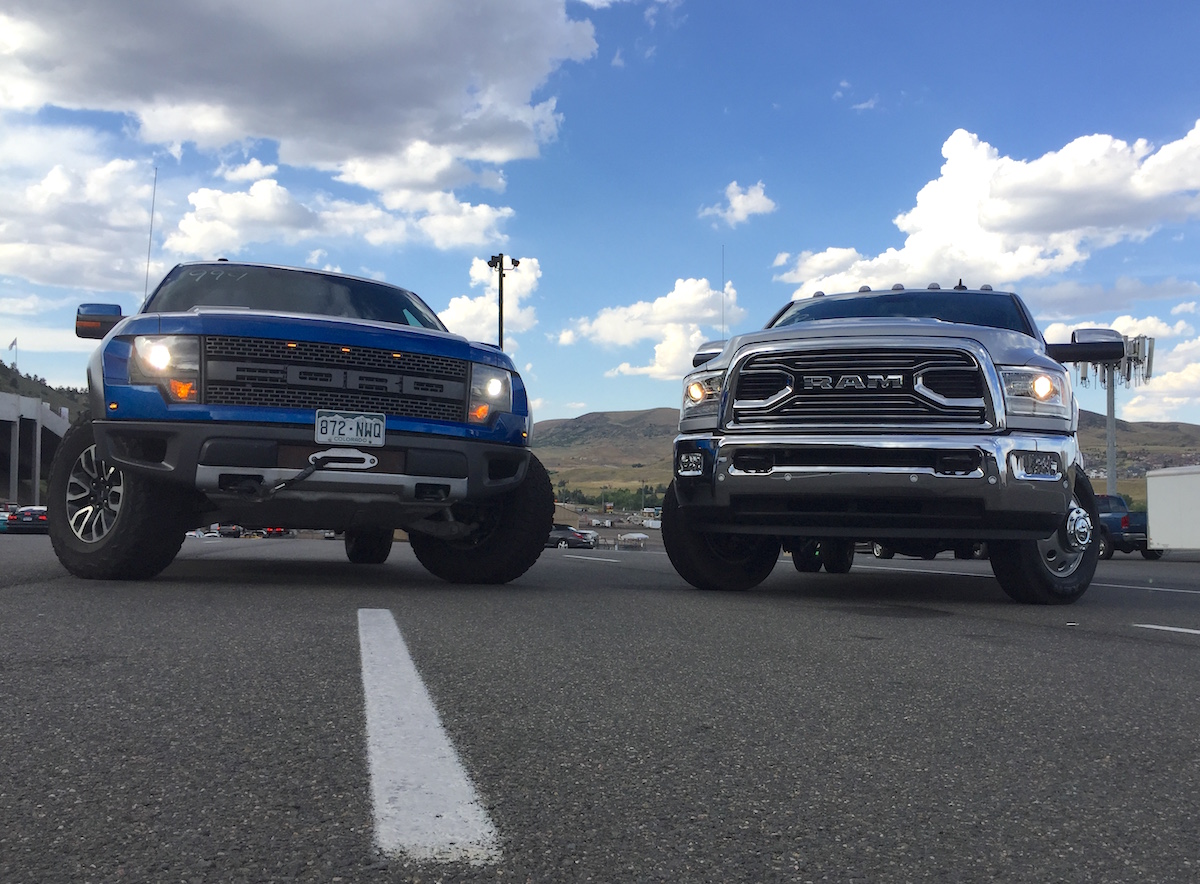
Is this the best riding trailer on earth? We recently went to Texas to test a new Float Ride trailer versus a regular fixed-neck trailer in a series of five tests.
This is an exclusive look at the a new air-cushioned gooseneck trailer. It’s a whole new way on getting your heavy gooseneck trailer to ride better. This review is brought to you by Float Ride Trailers – take a look at their website for more information and contact them for pricing.
We are using two trailers for comparison: a standard 32-foot fixed-neck gooseneck trailer, and a new Float Ride trailer that is about the same length and same weight. The fixed-neck trailer weighs about 8,000 lbs, and the Float Ride trailer weighs about 8,100 lbs. The guys at Float Ride say the air cushioned trailer neck components add approximately 380 lbs to the trailer.

These are the tests:
- loading test
- high speed rough highway test
- trailer deck leveling
- low speed very rough road test
- emergency braking test
This trailer neck suspension is comprised of semi-truck grade air bags, shock absorbers, hinges, an air compressor, and a battery. The system has a total of around eight inches of horizontal travel.
During the loading test, we noticed that the heavy 13,600 lbs Case back-hoe loaded did not lift the Ford F-350 off the ground as much as when using a fixed-neck trailer. It was just a simpler loading process that did not move the truck as much.
We noticed a dramatically improved ride with a loaded (22,000 lbs) trailer. When I was driving this loaded rig, there were times when I forgot there was a trailer behind me. When Mr.Truck was driving on the very rough county road, he was way more confident and at times was driving faster than when pulling a fixed-neck trailer.
We used a vibration meter and noticed a big improvement. The local acceleration measurements were done in meter/second-squared (or g forces). We saw values as high as 48 m/s^2 with a fixed neck, and 9 m/s^2 with the Float Ride trailer. This is a measured 5 times improvement in the forces that the trailer is transfering to the truck.
We also saw a significant (10%) improvement in braking performance with the new trailer. The guys at Float Ride say that the braking performance improvement is due to the suspension squat at the trailer neck which can transfer more weight to the rear axle of the truck and front axle on the trailer. In turn, this can make the rig’s brakes more effective.
The goal here is to isolate the trailer suspension motion from the truck, and this Float Ride system does that well.
















![Which is More Reliable: 3.5L EcoBoost or 5.0L V8? [Reader Question] Second-generation 3.5-liter EcoBoost engine](https://tfltruck.com/wp-content/uploads/2016/05/Second-generation-35-liter-EcoBoost-engine.jpg)
![Which Silverado Engine to Get: 5.3L or 6.2L V8? [Ask TFLTruck] 2016 chevy silverado](https://tfltruck.com/wp-content/uploads/2015/10/2016-chevy-silverado-grille.jpg)
